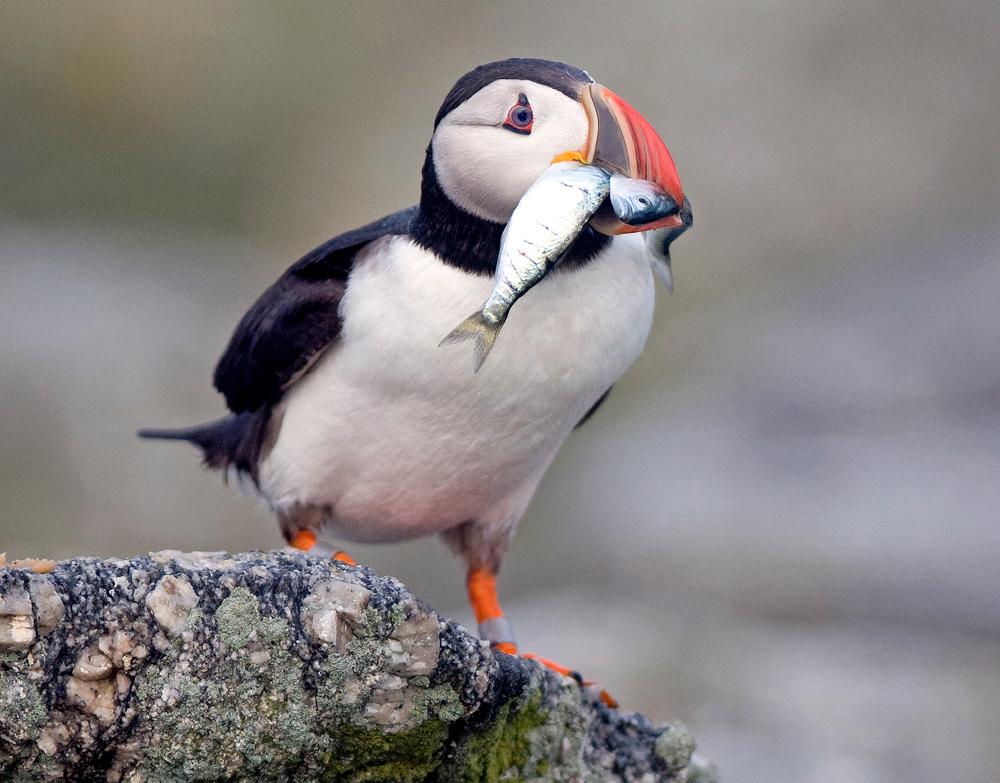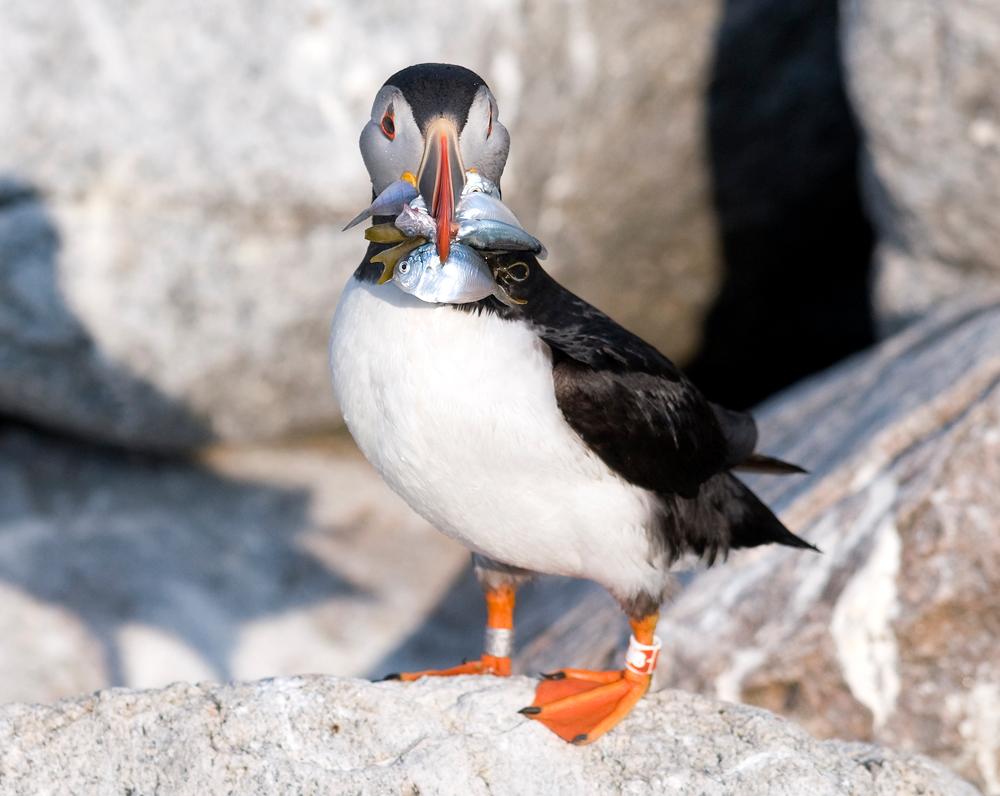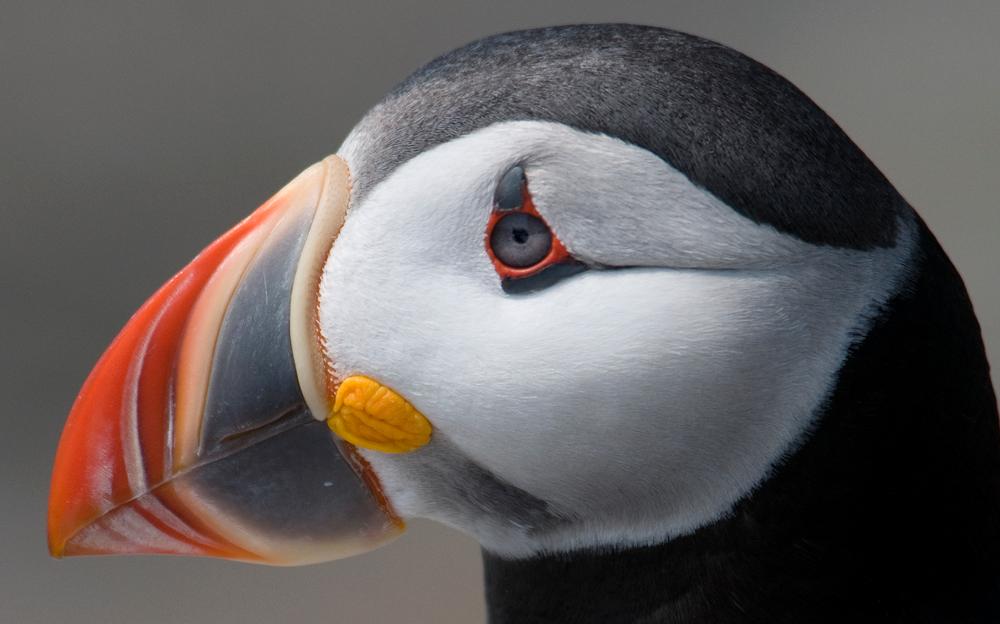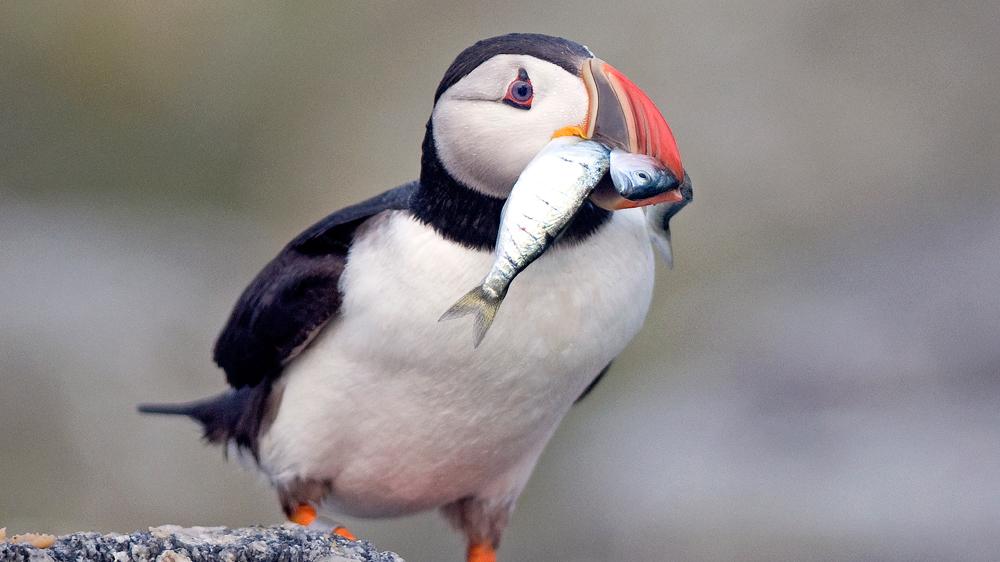How puffins made it back to Maine’s Egg Rock
Puffin with hake and bluefish.

In our new book “Project Puffin: The Improbable Quest to Bring a Beloved Seabird Back to Egg Rock,” National Audubon Seabird Restoration director Steve Kress and I wrote that puffins are a modern sentinel of the ocean and messenger of climate change. Such metaphors, like canaries in coal mines, tend to be used in negatively for deadly dangers unseen or very hard to see.
The negative was certainly true in 2012, when sea surface temperatures from North Carolina to the Gulf of Maine reached their highest recorded temperatures in 150 years. Though for you and me the surface water would still be bone chilling, the rise in the Gulf of Maine of only three or four degrees into the low 50s created a daunting heat wave for the puffins Kress has worked more than 40 years to restore on Eastern Egg Rock, several miles off Pemaquid Point.
Under normal conditions, Maine’s puffins fly onto islands with beaks full of Atlantic herring and white hake to feed to chicks in burrows under boulders. Those fish are both nutritious and thin enough for chicks to easily swallow.
But beginning in 2011 and continuing in 2012, puffins began bringing in fish more associated with mid-Atlantic and even southern waters, such as butterfish and moonfish. Those fish are oval and too wide for chicks to eat. The population of 123 nesting pairs dropped to 104 in 2012. A burrow-cam video captured the struggle of a puffin chick named Petey, struggling to eat butterfish. Petey eventually died.

But the analogy of the canary and the message from the sentinel can also be positive, giving us hope of what we can preserve if we fight climate change and don’t overfish the oceans.
Since 2012, puffins have increasingly brought in redfish and haddock, species that are direct beneficiaries of federal fishing management. And water temperatures cooled two degrees, just enough so herring and hake were abundant again. Another oily and nutritious eel-shaped fish, the sand lance (which is also a favorite for humpback whales), began showing up in puffin diets.
The result is one worthy of momentary celebration. The number of nesting pairs of puffins on Eastern Egg Rock shot up last year to a record 148 pairs. This summer, the count hit 150. In 1902, puffins were down to their last pair on Matinicus Rock, the victim of coastal farmers and fishermen who hunted them for food in the 1800s. Today, there are more than 1,100 nesting pairs on Eastern Egg Rock, Seal Island, Matinicus Rock and Petit Manan, with reports of puffins landing on other islands. Perhaps they are curiously thinking about creating new colonies.

But the last five years clearly present a choice that will affect their choice to expand. The Atlantic puffins of Maine are at the southern-most end of their range in the world. The fish they bring in are a virtual thermometer. This summer, the drama of what they catch unfolded before me as never before.
In two days of observation in a bird blind, I watched several families of puffins bring fish to their chicks. Some families brought in a non-stop stream of the “good” fish, such as hake, herring and sand lance. But one set of parents brought in nothing but butterfish.
Despite the record year, some chicks did die because they were fed the wrong fish. The continuing presence of butterfish should be all the warning we need about warmer waters. If the waters stay cool, the puffins will be cool.
